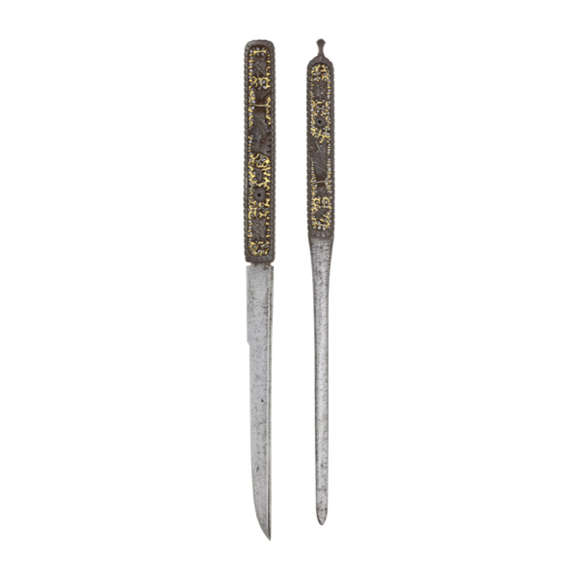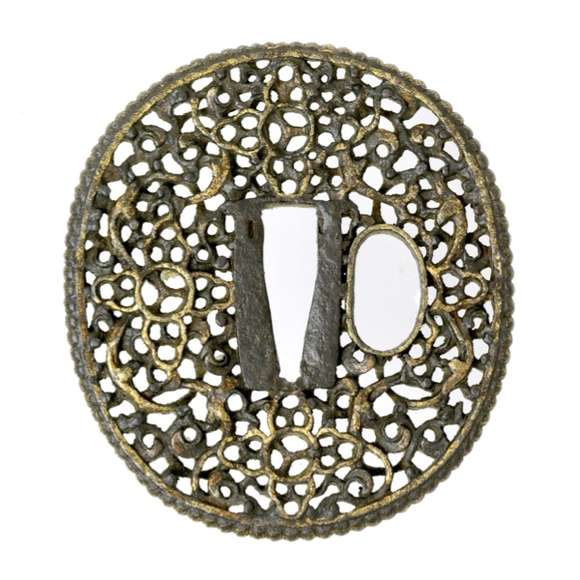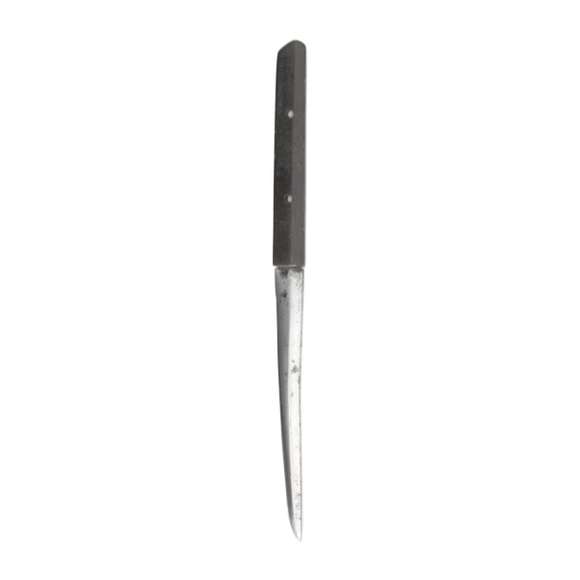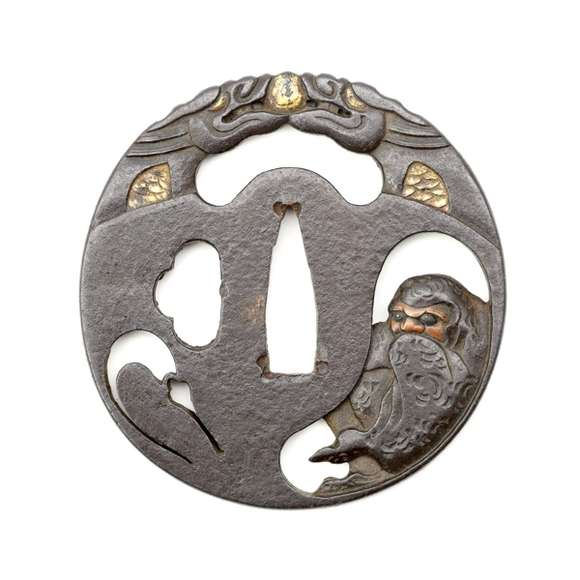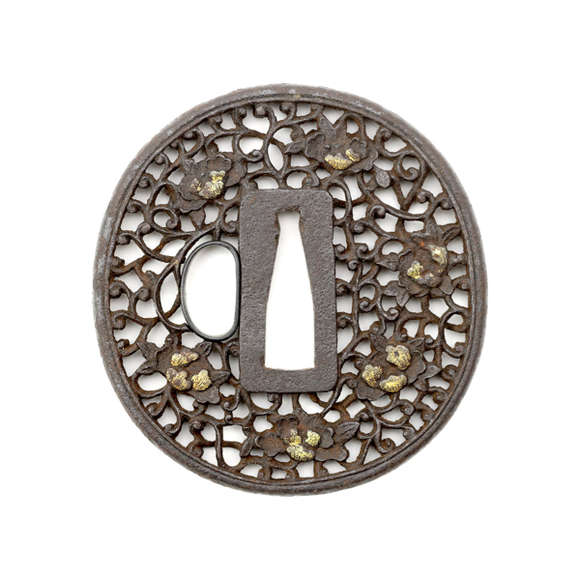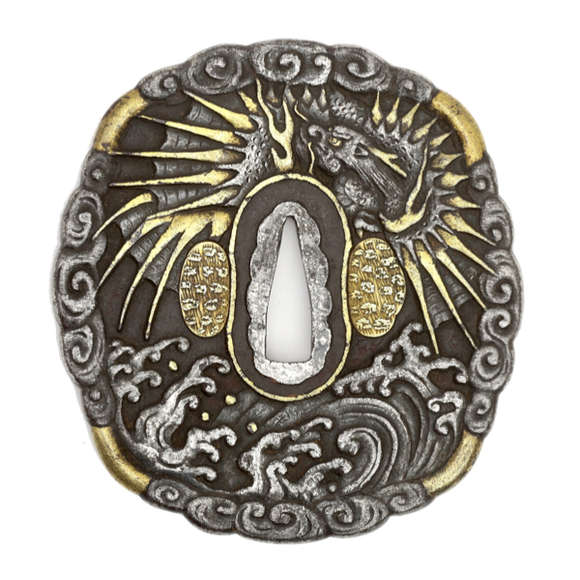The only set of its type known to me in both private and museum collections.

37.5 x 22.5 mm x 13 mm
Weight 25 grams
35 x 18 mm x 8 mm
Weight 13 grams
Japan
Shibuichi, copper, gold.
Maker was active around 1780
A beautiful signed Japanese ferrule (縁) or fuchi and pommel plate (頭) or kashira.
Both mounts are made of dark shibuichi, a prized copper-silver alloy that became widely popular among fitting makers in the 18th century. They are inlaid with pieces of metal of different alloys, including gold and copper, in contrasting colors.
Iconography
The kashira shows Su Shi on a donkey. He was a Song dynasty statesmen and polymath who lived from 1037 - 1101 A.D. and is today celebrated as one of the most important figures in classical Chinese literature. He was critical against the reforms of chancellor Wang Anshi, and his sharp brush got him in trouble more than once which resulted in him being exiled. The figure on the fuchi is possibly Wang Anshi.
Hisayuki
It was made and signed by Hisayuki (久隨) who was active before 1781 and a student of a certain Murakoshi Shigeyuki who was an assistant samurai.1 Both worked in the Hamano style.
Conclusion
A beautiful example of fine Japanese metalwork of the 18th century. It depicts a Chinese exemplary scholar that got in trouble for speaking his mind. This set exemplifies the importance of Chinese high culture in educated Japanese circles of the Edo period.
Notes
1. Wikipedia has a good article on Su Shi. (Accessed July 2019.)
2. Haynes, Robert E.; The Index of Japanese Sword Fittings and Associated Artists, Nihon Art Publishers. 2001. For Hisayuki see H 01571.0. For Shigeyuki see H 08613.










A very rare Chinese saber guard dating from the height of the Qing dynasty.
A peculiar tsuba with a depiction of Bodhidharma and two dragon chasing a pearl.
Executed in "nanban style" openwork with chiseled and gold-encrusted peonies.

